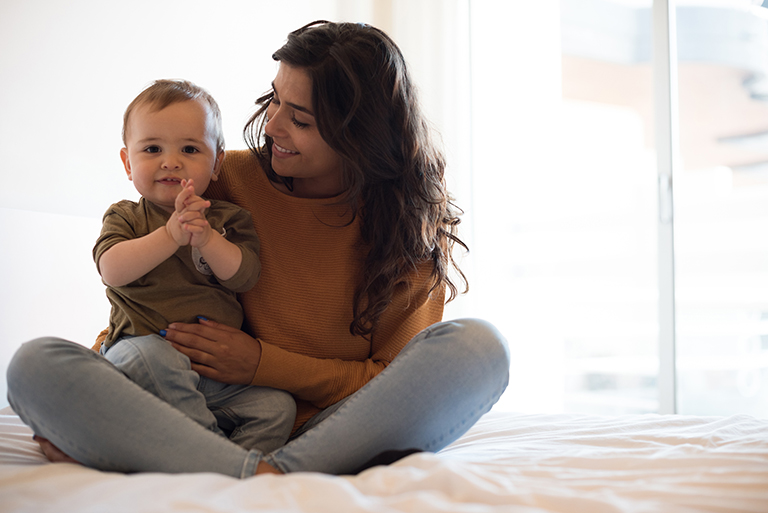- Education
- Parenting
No need to guess - use sign language to "talk" to your baby

In this article, you’ll find answers to questions like:
1. What are the benefits to baby sign language?2. How do I get started start?
3. Will it delay talking?
Want to know what your baby is thinking? Sign language can make that possible. Babies can understand a few basic words after 9 months old and may begin to use consonant sounds and tones of voice to communicate, according to Grow by WebMD. Around 12 to 18 months, most babies will sound out Ma-ma or Da-da to address their parents.
However, sign language experts say babies as young as five months have learned to communicate with hand gestures. For example, the sign for milk is to open and close your fist in a milking motion.
Sign language can spark non-verbal communication before your baby can speak. Some babies will learn to sign faster, but experts reassure they will pick it up through repetition.
1. WHAT ARE THE BENEFITS?
Does your child want a bottle of milk? Does he want more food or is he finished? With sign language, you and your baby could have a simple conversation. This video shows how a mother taught her daughter 15 signs before she learned to speak.
“A mutual respect develops when you recognize what the baby is trying to tell you and share their world. They have so many questions,” says Sherri Hanlon, a former baby sign language instructor in Atlantis. “It was beneficial in so many ways. It’s a wonderful symbiotic relationship.”
2. HOW TO START?
Repetition is key. The first step is to say the word and gesture at the same time. For example, when you hand your baby milk, say “milk” while making the sign for it.
Pair the sign with the word every time you say it — remember, repetition is key! Don’t be discouraged if your baby doesn’t sign immediately; it may take some time to connect the word and hand motion. And when they do start, the gestures may not be perfect. But keep at it.
Boca Raton resident Lara Crowe taught her two sons to sign when they were babies. “Start with basic signs. It takes patience and time, but their little faces light up when they realize you understand them,” she says.
3. WILL IT DELAY TALKING?
Actually, the opposite!
Research indicates sign language may make the spoken word easier to master.
A seminal study by professors Linda Acredolo and Susan Goodwyn, funded by the National Institute of Health, showed that 11-month-old babies exposed to sign language had larger vocabularies and understood more words by age 2 than those in the non-signing group of the study.
“People have the misconception that signing will stunt the ability or desire to speak, when instead it actually encourages babies to speak sooner,” Hanlon says. “I started teaching my daughter at three months, and she started talking much earlier than her peers.”
She suggests starting with signs for things that interest your baby the most, such as a dog.
“Some children quit signing as soon as they can speak. Others gradually quit using it,” Hanlon says. “To this day, my kids still sign when we are at a crowded event or outside.”
SOURCES:
• Sherri Hanlon, former baby sign language instructor
• Grow by WebMD
• Seminal study, “Impact of Symbolic Gesturing on Early Language Development,” June 2000
Related resources
-
- Behavior
- Health
- Parenting
HomeSafe
Healthy Beginnings Entry Agency — provides free child development and social-emotional/behavioral screenings to Palm Beach County children through age 5 to determine if they're eligible for services funded by Children's Services Council
561-383-9800 Website Email -
- Health
- Other
- Parenting
Healthy Mothers, Healthy Babies Coalition of Palm Beach County
A safety net of local services and support for pregnant women and families with infants, focusing on racial disparities in birth outcomes
561-623-2800 Website
